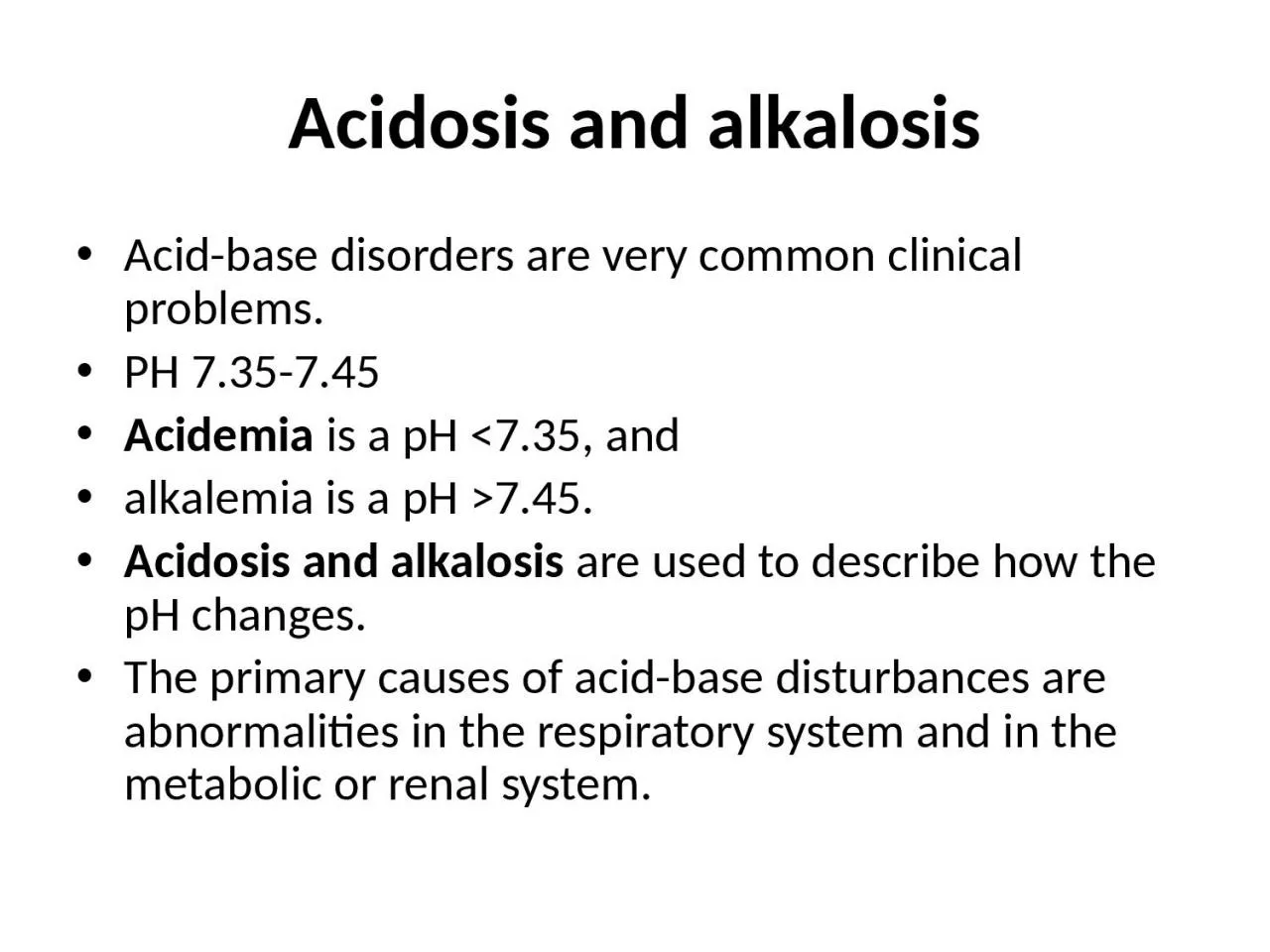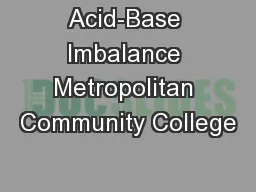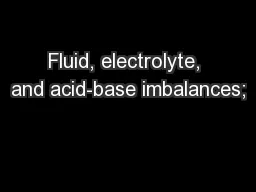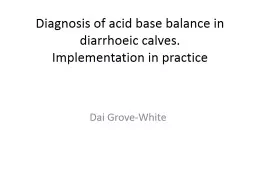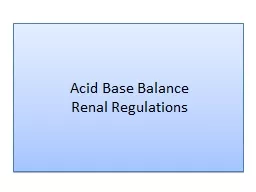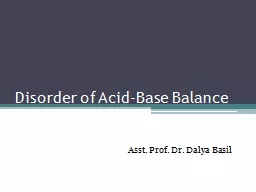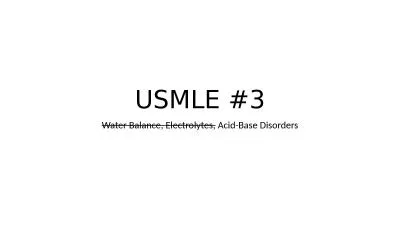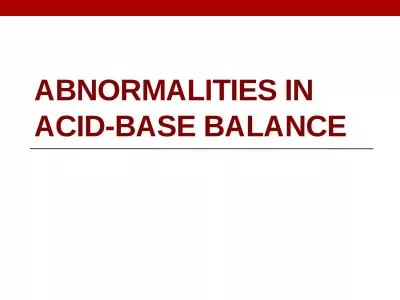PPT-Acidosis and alkalosis Acid-base disorders are very common clinical problems.
Author : cady | Published Date : 2023-05-26
PH 735745 Acidemia is a pH lt735 and alkalemia is a pH gt745 Acidosis and alkalosis are used to describe how the pH changes The primary causes of acidbase disturbances
Presentation Embed Code
Download Presentation
Download Presentation The PPT/PDF document "Acidosis and alkalosis Acid-base disorde..." is the property of its rightful owner. Permission is granted to download and print the materials on this website for personal, non-commercial use only, and to display it on your personal computer provided you do not modify the materials and that you retain all copyright notices contained in the materials. By downloading content from our website, you accept the terms of this agreement.
Acidosis and alkalosis Acid-base disorders are very common clinical problems.: Transcript
Download Rules Of Document
"Acidosis and alkalosis Acid-base disorders are very common clinical problems."The content belongs to its owner. You may download and print it for personal use, without modification, and keep all copyright notices. By downloading, you agree to these terms.
Related Documents

